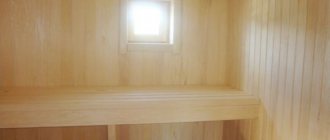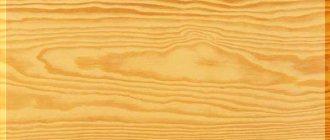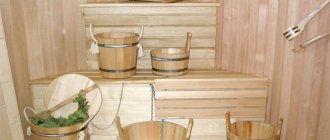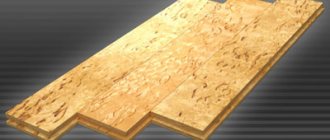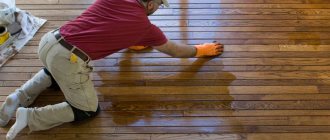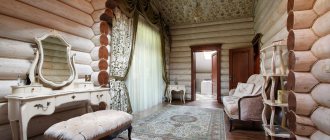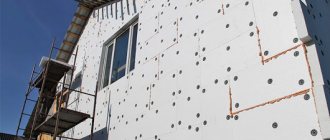General characteristics
Alder trees and shrubs are deciduous plants belonging to the birch family. In nature, there are about 30 species of this fast-growing plant. One of the reasons for cultivating alder is to quickly create a landscape and create shade. Alder prefers moist conditions and grows primarily in swamps and wetlands, along streams and rivers.
Trees and shrubs are monocultural, so each plant contains both male and female flowers. Flowers are presented in the form of male - longer and female. Once pollinated and matured, the female flowers become woody and somewhat similar in appearance to the cones found on pine needles. Inside there is a dry fruit, bitter taste, with a high protein content.
The edges of the alder leaf are serrated with a distinct vein running down the center of the leaf and a series of softer lateral veins. The leaves do not change color before leaf fall and fall green.
The three most famous types of these trees are:
- red alder, growing mainly in northwestern latitudes, reaches a height of up to 15 meters and lives up to 100 years;
- black alder, better known as European, reaching a height of 20 meters, living only 20 years;
- gray alder is much smaller than its species, only 5 meters in height, but valued for its ability to grow in infertile soil and the beauty of its spring blooms.
Typically a slender tree with smooth bark. In appearance, alder is distinguished from other trees by its early flowering, leaves that do not change color in the fall (slightly curled, they fall green) and cones hanging on the branches in winter.
Mostly gray and black alder are found in Russia. Black alder is also called sticky alder. In Russia, Moldova and Kazakhstan, black alder is listed in the Red Book.
Shades
The color of alder furniture is not flashy or loud, but even, calm, and this is why it is so popular among buyers and manufacturers.
Shades:
- honey;
- white Navajo;
- yellow;
- wheat;
- sunflower color;
- soft lemon;
- amber;
- golden oak;
- cherry;
- turmeric;
- canary.
This palette goes well with wallpaper and flooring in salad, olive and mint shades. Also, other colors that can decorate any room are in perfect harmony with alder-colored furniture.
Physical and mechanical properties of alder wood
The advantage of alder wood is the uniform color of the core and sapwood; the older the tree, the darker the wood. When dried, it practically does not crack and is little susceptible to warping. After cutting, the cut of the tree becomes reddish due to the oxidation of substances in the wood; after drying, the color becomes slightly lighter, while the sapwood and the heartwood differ slightly in shade.
Average characteristics of wood:
- average density in air-dry state: 495 kg/m3;
- Yankee hardness: 2.890 N;
- modulus of rupture: 75.9 MPa;
- elastic modulus: 8.99 MPa;
- compressive strength: 42.2 MPa;
- shrinkage: radial - 5.0%, tangential - 9.0%, volumetric - 14.0%.
Soft, homogeneous wood, medium-heavy, similar in properties to linden wood.
Perfectly polished, impregnated and painted. Black and gray alder wood differ significantly in moisture absorption and density. Black, denser and absorbs less moisture.
Not resistant when in contact with the ground, but becomes resistant when stained and under water in the absence of oxygen. Dried wood has good thermal insulation properties and is capable of absorbing and dissipating sounds.
It can be easily processed manually and mechanically, adheres well, and is secured with nails and screws. Combines perfectly with any materials.
Interior doors made of solid pine are the most affordable
Doors made of solid pine have more disadvantages than advantages, but their low cost is an indisputable advantage, which to some extent compensates for the disadvantages. So, let’s list the disadvantages so that buyers know in advance what they can expect if they install solid pine interior doors in their apartment.
- Solid pine is hygroscopic - it quickly absorbs and retains moisture from the air, which over time can lead to disruption of the geometry of the door leaf. Therefore, it is necessary to use solid pine doors in rooms where there are no large differences in humidity;
- Doors made of solid pine are afraid of mechanical stress, since the wood is soft and scratches and dents quickly form on it;
- Interior doors made of pine do not “like” sudden temperature changes.
Despite all the shortcomings, interior doors made of solid pine are the most common option, since there are special wood care products that protect against the negative influence of the external environment, which significantly extends the life of the doors.
Areas of application of alder wood
The high strength properties of alder wood, which manifest themselves under water, are used in the construction of wells, the manufacture of barrels and water containers. Even and red alder is used to make musical instrument bodies.
Alder is widely used in the manufacture of furniture and finishing carpentry. Its wood is used to make veneer, plywood, various lumber, fiberboard and chipboard, and is used in the manufacture of laminate.
Alder charcoal was previously used to make hunting gunpowder. Firewood made from alder wood is valued for its unique odor released during combustion. Used in preparing special dishes and for smoking.
Due to its good staining properties, alder is used to imitate more expensive types of wood.
Lining made from alder is successfully used for finishing baths. The material does not change its shape under the influence of high temperatures and moisture, does not heat up and does not emit unpleasant odors. When heated, alder lining acquires a reddish tint and remains that way until it cools down.
Alder is often used to make frames and doors for children's rooms, as its wood has antiseptic and antibactericidal properties.
Products made from alder are lighter than similar products made from other types of wood.
Alder bark, leaves and cones are successfully used in medicine and the chemical industry.
The structure and softness of wood make it possible to use it for cutting panels, sculptures, and carved dishes.
Wood species
Join the VKontakte and Odnoklassniki groups
Interior doors made of solid oak have no disadvantages
Oak, as a building material, has always been valued somewhat higher than other types of wood. This is due to its performance characteristics. In terms of hardness, oak wood is second only to acacia and some exotic species, but all of them are very rarely used for making doors. Due to its structure, oak wood has the following advantages:
- High thermal insulation performance. For interior doors this characteristic is not as significant as for entrance doors, but it was necessary to mention it;
- High noise-absorbing characteristics. Thanks to its dense structure, an oak door prevents the penetration of third-party noise from other rooms, and this indicator is already relevant for interior doors;
- Long service life. An oak door can last more than 100 years.
An oak door has no negative performance indicators, so the disadvantages include a higher cost compared to the cost of doors made from other types of wood. In Minsk, you can buy interior doors made of solid oak in our pavilion, the address of which is on the contact page, or place an order directly on the website.
Imitation oak timber
Imitation of oak timber provides an ideal opportunity to give a cottage or house a representative appearance.
Strong and durable oak will allow you to forget about repairing walls and external facades for many years. The beautiful structure of the wood cut will emphasize the thoroughness of the owners. Varnishing or coloring the surface of imitation oak timber will emphasize the individuality of the owner. Saving money when using imitation timber is also an advantage of this material. Finishing imitation oak timber is a rather complex process, so it is better to entrust it to specialists.
What do alder leaves look like?
Alder leaves have a round shape and do not change color throughout the entire deciduous season. Even with the onset of a colorful autumn palette, they remain green, falling off with the first frosts. Fallen leaves contain large quantities of nitrogen, so when they fall, they enrich the earth with a useful mineral.
Interesting materials:
How to insert a picture from a collection of pictures from a file? How to selectively select files? How to selectively select files on your computer? How to select multiple files to send? How to select multiple files for deletion? How to select only some files? How to select all files on Yandex disk? How to move files in folders in Explorer? How to extract a file from Avast 18 virus vault? How to drag a file to your desktop?
Description of the plant
Alder is a perennial deciduous shrub or tree with a developed but superficial rhizome. Because of this, large varieties are often blown over by the wind. Over time, small swellings filled with nitrogen-fixing bacteria form on the roots. By processing nitrogen from the atmosphere, alder very effectively saturates and enriches the soil with it. The shoots have a round cross-section and are covered with smooth grayish-brown bark. Horizontal wrinkles form where new branches appear. Triangular or heart-shaped lenticels are noticeable on the bark of young shoots.
Alder leaves are oval or obovate, with a wide, rounded tip and serrated or wavy edges. The leaf surface is smooth, wrinkled between the veins. The foliage grows alternately on short petioles. Stipules fall early.
At the end of spring, unisexual flowers bloom on the alder tree. Staminates are concentrated at the ends of young shoots in long flexible inflorescences (catkins). They are colored red-brown or yellow-brown. Catkins with pistillate flowers are shorter, denser ears at the bottom of the shoot. Flowering begins along with the blossoming of leaves.
Pollination occurs with the help of wind. After it, the fruits ripen - miniature cones with woody scales. Ripening is completed by mid-autumn. Inside each nut there is a single nut with wings (less often without them). The valves of the mature cone open and the seeds spill out. The release process may take until spring. The wind carries the seeds over fairly large distances, and spring streams complete the migration process many kilometers from the mother plant.
Wood hardness indicators
The performance characteristics of furniture (wooden table, bed, bedside table, etc.) very much depend on the type of wood from which it is made. To compare wood species, hardness is used. It is the hardness index that determines how successfully the tree will withstand mechanical loads, i.e. The harder the wood, the less scratches and dents from impacts with a metal object will be visible on it. Ultimately, this will determine how long your furniture will remain looking great.
Below is a comparison table of the hardness of different types of wood.
| Brinell wood hardness chart | |
| Wood species | Average hardness kg/mm² |
| Ebony | 8,0 |
| White Acacia (Acacia) | 7,1 |
| Mahogany | 5,0 |
| Pear | 4,2 |
| Maple | 4,1 |
| Merbau | 4,1 |
| Ash | 4,0 |
| Beech (Buche) | 3,8 |
| Oak | 3,7 |
| Birch (Betula) | 3,5 |
| Walnut (Nussbaum) | 3,5 |
| Teak | 3,5 |
| Cherry (Prunus avium) | 3,5 |
| Sycamore (Platane) | 3,2 |
| Cherry | 3,1 |
| Alder (Alnus) | 3,0 |
| Pine | 2,49 |
| Spruce | 2,3 |
| Aspen | 1,86 |
* The hardness of wood within the same species may vary depending on the cut. The table shows average values by type.
Combination of alder color with other colors in the interior
The color of alder furniture will go perfectly with rich and colorful wallpaper.
Look harmonious:
- light shades;
- brown palette;
- Red color;
- salad shade;
- grey colour.
For those who prefer a calm style in the interior, a combination of alder color with shades is perfect:
- peach.
- pink.
- baby blue.
- cream.
- powdery.
It will add elegance to the interior with a deep blue tint. It will fill the space with comfort. This combination will be preferred by people who are active, energetic, cheerful and cheerful.
A tandem of alder color with a grass color scheme will look natural. The interior will give pleasant energy, give the room a natural, natural, natural feel.
It is not appropriate to combine the color of alder furniture with the following shades:
- lilac;
- black;
- cool brown;
- turquoise;
- plum;
- coral;
When selecting interior items in an alder shade, it is necessary to take into account some features:
- You should not combine interior elements with baroque and high-tech style.
- Simple and affordable furniture is suitable for creating an elegant interior, simple and functional, presentable and bright.
- Ideal for the alder shade, the interior style is romantic, country, shabby chic, fusion, minimalism.
- The shade provides conciseness and simplicity in interior design.
- Alder will pair perfectly with natural colors of floors and walls, wooden surfaces, and fabrics made from natural materials. All this adds comfort to the room.
Alder color for furniture is very popular today. Anyone who prefers this shade for their apartment should experiment with colors and make sure that the selected furniture elements, wallpaper, floor coverings, and various accessories will harmoniously combine and create the necessary warmth and comfort.
Linden
Imitation of linden timber has several undeniable advantages over other materials: appearance, excellent sound and heat insulation, and absence of surface defects. Imitation of linden timber is used for cladding the internal and external walls of frame and brick houses. It is great for decorating ceilings, bay windows, allows you to visually expand the space of a room, and creates a unique style. Thanks to the unique profile design (tongue and groove), a tight fit of the boards is achieved, there are no gaps between them and ease of installation.
Growing alder
For cultural cultivation of alder, seed and root propagation methods are used, as well as cuttings. Seed propagation and self-seeding are more popular. In September or October, when the cones ripen, the seeds are released and sown independently in open ground. Once in the soil, they are stratified naturally and the next year, saturated with moisture from melt water, they produce the first shoots.
Alder seeds are sent into the ground to a depth of 3 cm and sprinkled with earth. First, low growth is formed. When the rhizome grows properly, the seedlings will begin to grow stronger and will soon turn into a spreading shrub, which will increase in length by 50-100 cm every subsequent year.
After some time, young branches bloom, which increase their growth by more than one meter annually. In the spring, the offspring are dug up, preserving a lump of soil, and transplanted to a permanent place of residence.
Cuttings are harvested in the summer or spring months. The length of the cut cuttings should be about 12-16 cm. Rooting occurs directly in open ground. The plant takes root better if the end of the cutting is treated with a stimulant. Planted alder cuttings need regular watering. In a few months they will take root and become stronger enough to overwinter on their own.
Larch
There are three varieties of larch: European, Kuril and Siberian. Siberian larch is used to make imitation timber.
False timber, otherwise known as imitation timber, is most often used when decorating the facades of buildings, although it is also used for interior decoration. This is a profitable and practical finishing option. The low thermal conductivity of imitation larch timber allows you to retain heat in the house, resistance to external factors extends the service life of the material for a long period, and its low cost makes it affordable to people with average incomes.
Color Features
The alder tree species is a soft species. It does not have a pronounced structure. Alder is characterized by a honey tint; the wood is also often painted reddish or pale yellow. It looks a little like amber, and in the light it plays with the sun's rays, it will suit the interior of luxury and exclusivity.
The wood species has many advantages:
- environmentally friendly material;
- pleasant aroma;
- ease;
- no toxins;
- long period of use;
- practicality;
- positive energy;
- softness of shades.
Manufacturers often use different materials to imitate the color of alder. For this, plywood, chipboard, and MDF are used.
The main feature of the shade is its amazing soft and warm aesthetic. Fans of comfort and delicate colors that gently wrap you up and give you the opportunity to relax will appreciate the beauty of this unique color.
Interior elements made in an alder palette differ:
- elegance;
- stylishness;
- grace;
- ease;
- chic.
The alder color will suit different style solutions for an apartment, house, or any room. The shade goes well with different color palettes.

